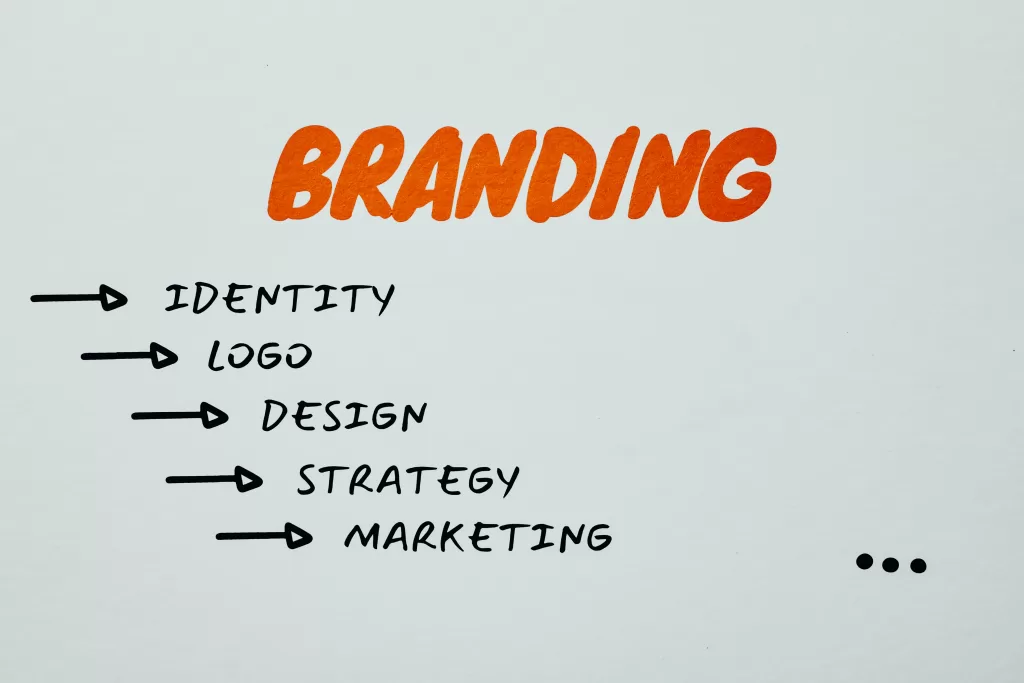Social media has become an integral part of our lives. It has developed how brands reach their target markets, interact with their target audiences, and establish their brand identity. It provides an unparalleled opportunity to connect with your target audience, build brand identity, and drive growth.
Nowadays, B2B brands have also started to understand the importance of social media in shaping their brand identity. But what is brand identity, and why is it so important?
Brand Identity is the perception of your brand’s personality, appearance, and behaviour that the other businesses and stakeholders have of your brand. A strong brand identity can build trust, build a lasting reputation, and differentiate your business from the crowd.
Now, you ask why use social media for B2B businesses. Social Media helps you to build your brand’s reputation, reach out to potential clients, and help you to network with other business owners. Your social media presence will create an authentic perception of your business and create an essence of your brand’s values and mission.
However, there are some “secrets” to elevate your brand identity on social media platforms that nobody will tell. In this blog, we will unveil secrets to improve your B2B brand identity on social media platforms and be in the game!
1. Create your Target Audience Personas:

A target audience persona is a well-researched and detailed description of a fictional character that represents your target audience. This persona is based on deep research of your existing and desired audience. Having a persona will help you understand your prospects. Every social media platform caters to a different interest for your target audience.
The audience on TikTok is looking to discover new places, people, products, and services through video formats. The audience uses Instagram to stay interested in what their friends and families are doing, where they are traveling, etc. On Facebook, the audience also interacts with their families and other people in groups and Facebook pages. Finally, on LinkedIn, the audience is constantly connecting with other professionals instead of their family or friends. They use it to discover new possible roles, companies, and curiosities related to their job field. If you post the same content across all your social media handles it won’t resonate with your target audience. Hence, this target audience persona will remind you to tailor your content to their needs and interests and then map them to different social media channels.
Action steps:
- Conduct audience research basis the demographics, preferences, and behaviour of your target audience
- Understand which social channel your audience uses and spend most time online
- Choose the right social media platform and alter content accordingly
2. Personalise your brand voice and tone

Now that you have created your target audience persona, decide what should be your brand’s tone of voice (i.e. how you want your B2B brand to be perceived by prospective customers and investors). The brand voice should be consistent but the tone should be personalised to each prospective customer. This will help you build trust, loyalty, and credibility with your audience. You need to decide whether it be formal, conversational, or a blend of both. To attract potential clients, communicate your brand’s values, and your story. For example, how you started, your challenges, your goals, and your achievements. Leverage the power of visual storytelling by creating captivating posts that convey your brand’s value and story.
Action Steps:
- Create customised and personalised messages for each potential customer.
- Design one brand style guide that will dictate the details of logo usage, font styles, colours, formats, and the general look and feel of the company’s branding.
- Share your brand’s journey, challenges, and success. Humanise your brand by showcasing the people behind it, their expertise, and values. This builds trust and fosters connections.
3. Be consistent
“Consistency is the key”, as the old saying goes. Ensure all your branding elements, tone, and appearance are consistent. Maintaining a uniform message reinforces your brand identity and builds trust with your target audience. The content language and visual elements should be consistent with your brand’s identity and easy to recognise across all social media platforms, including logos, colours, and media. Create a content calendar to plan and schedule posts in advance. It will help you to balance the content mix, adjust your posting schedule, and coordinate your efforts across all social media platforms. With scheduling tools, analyse your audience’s behaviour and their active time and maintain a consistent posting schedule.
Action Steps:
- Use consistent visual messaging, and branding elements such as logo placements, font styling, and filter techniques.
- Dedicate days for content creation as it will save you a lot of time and will raise your spirits to get into a state of flow.
4. Engage with valuable content

Content is an art to excel on social media and getting it right is a skill-set. B2B brands must outshine and provide valuable and engaging content to build a strong brand identity. Engaging content is about building your target audience’s confidence and trust in your brand, services, and products that will lead to a sale. Therefore, engage with your audience through showcasing behind-the-scenes, and client testimonials and build a memorable brand identity. Encourage your customers and business associates to produce content or share their experiences about your company’s products or services. Leverage this user-generated content and post it on your social media platforms. It will not only give your brand authenticity but also will help you create personal connections with your customers.
Action steps:
- Don’t just post and forget. Engage with your audience through comments, reply to all the comments on the post, and share it with others on stories, and via DMs (direct messages). Interaction is the key factor in social media. If your audience is sharing, commenting, and saving your posts, the algorithms will show the content to a new audience based on their common interests with your followers.
- Don’t overdo with lingos and trends. Provide your audience with intelligent and well-researched content.
- Highlight the reviews shared by your customers and business associates. Make a creative post or a video content highlighting your customer’s name and company.
5. Educate and Share Value
Your brand needs to position itself as an innovative leader in the B2B sector to improve your brand identification. Don’t just advertise your products or services; also share your knowledge about market trends, industry insights, and tips. Position your brand as an expert in the field. Your brand will stand out if you consistently provide value and demonstrate your knowledge, attracting an audience interested in your niche.
Action steps:
- Share insightful articles, research summaries, and presentations with your customers related to your sector.
- Join industry-related forums and groups, partner with industry influencers who can amplify your leadership in the industry.
6. Paid Advertising
Sometimes, a brand may require an extra push to reach the desired audience and establish a strong brand presence. Organic social media strategies are important, but paid advertising has a strategic advantage when it comes to building your brand. With the help of paid advertising, you can increase your brand awareness and broaden exposure with the aim of customers recognising your brand. What is more, paid advertising also allows you to connect with your target audience, and drive traffic to your website.
Action Steps:
- Allocate a budget for paid advertising, and choose between daily or long-term budgets. Social Media advertising can be expensive. So, monitor your spending and ensure it aligns with your brand objective.
- Ensure that the ads are mobile-friendly, persuasive, and have strong call-to-action(CTA).
7. Measure, Analyse, and Adjust

Social Media algorithm isn’t static; it keeps changing every day. Measuring it constantly will help you learn from the past and help you improve future tactics and social media strategies. Therefore, use analytics tools to monitor the performance of your social media efforts regularly, and track metrics such as click-through rates, lead generation, reach, and engagement for each post. Use these insights to measure what type of content is performing well and what isn’t gaining traction. Practice to analyse your efforts gives your control over the strategies and makes it easier for you to adjust.
Action Steps:
- Allocate a budget for paid advertising to get the desired ROI.
- Determine KPIs around reach, followers, comments, retweets, likes, and other engagement elements.
All in all, Social Media has become a necessity in our daily lives and a major component of B2B marketing strategy. It is the best way to build a loyal community through marketing research and product development. Building a brand identity is not an overnight effort; it is a long-term commitment and requires dedication, patience, persistence, and adaptability to the ever-evolving social media landscape.
Social media will allow you to build and strengthen these attributes while developing a personal connection with your target audience. If your B2B brand adopts these tactics, you can establish a strong brand identity on social media leading to increased trust and more business opportunities.
Do you have a B2B company and are looking to elevate your brand identity on Social Media?
At WBS, we have an experienced team of technical analysts, and talented digital marketers who will help your B2B company create a social media campaign to drive influence and engagement. Connect with us to help you create a memorable brand.








